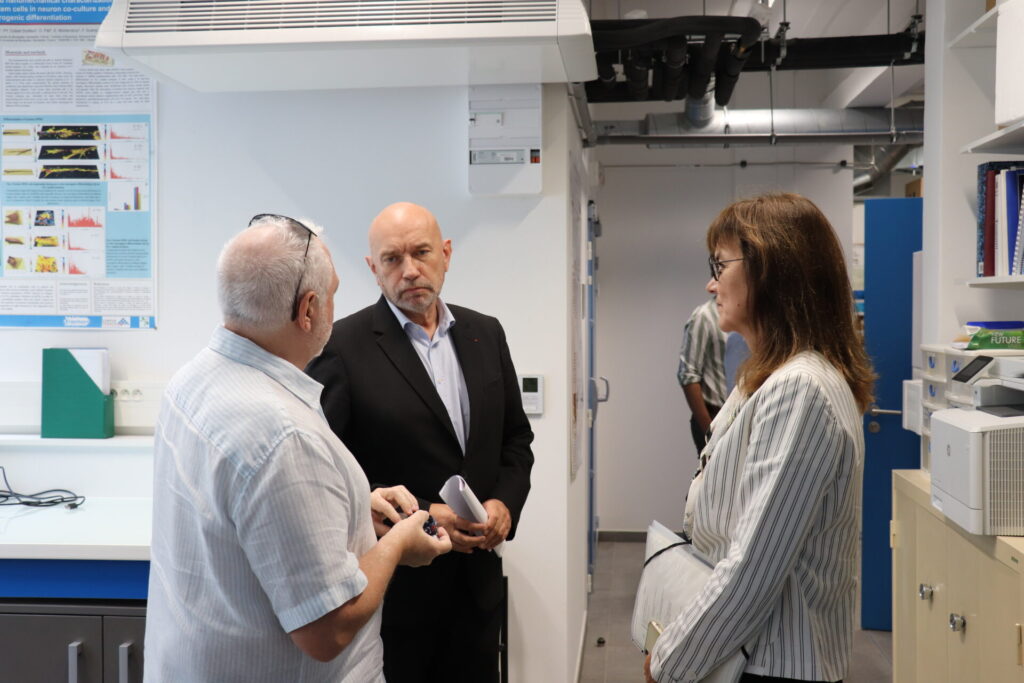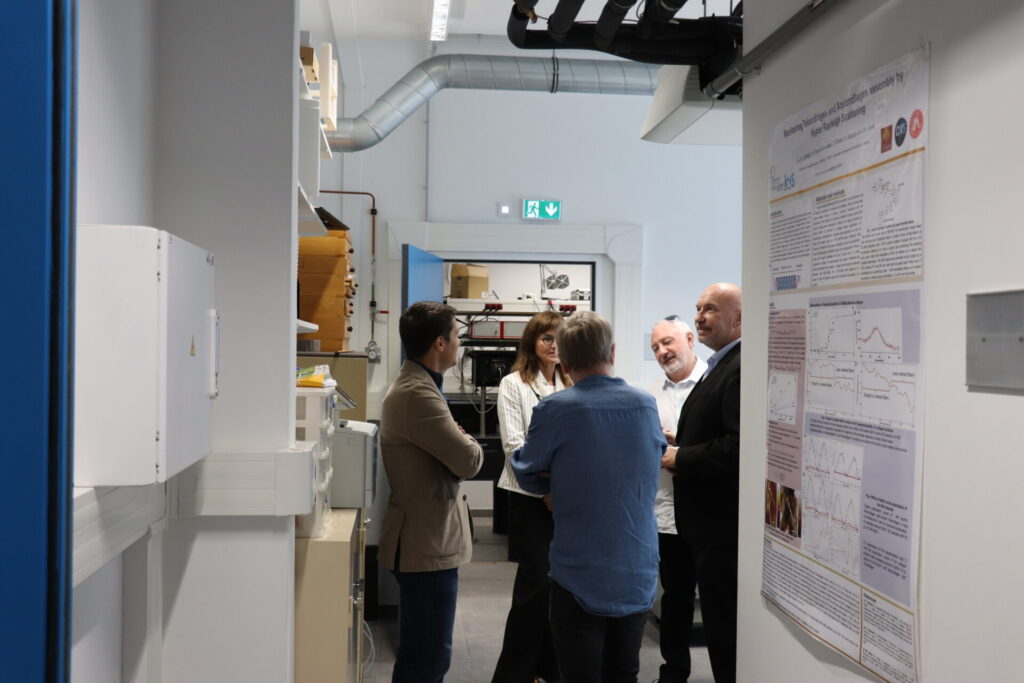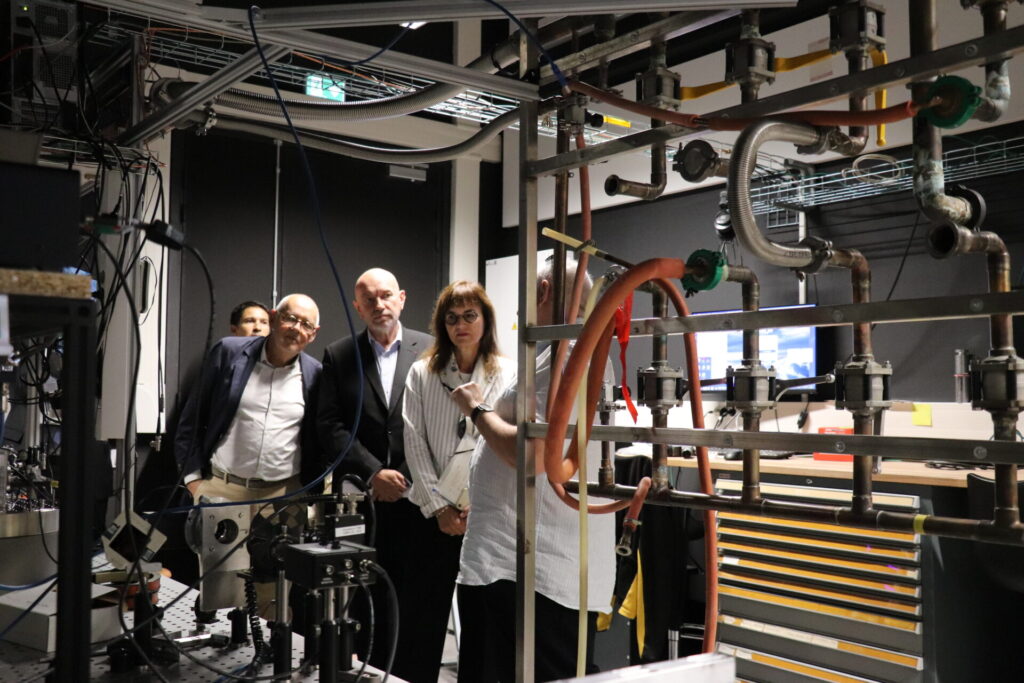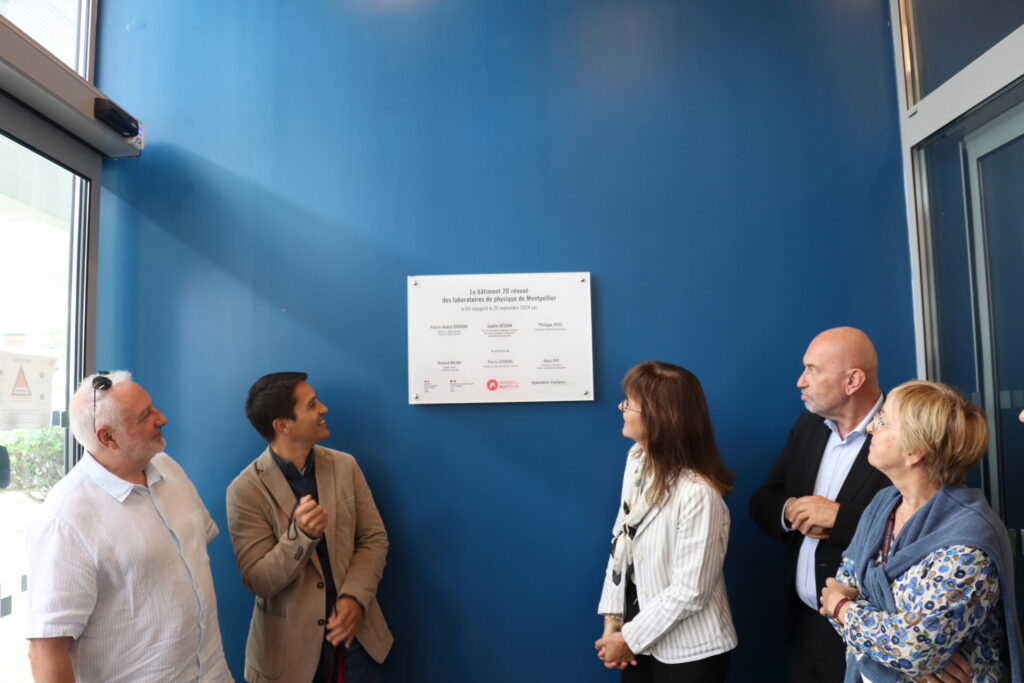Inauguration of the first renovated building for Montpellier's physics laboratories
On September 25, 2024, Sophie Béjean, Rector of the Occitanie Academic Region, Rector of the Montpellier Academy and Chancellor of the Universities, and Philippe Augé, President of the University of Montpellier, inaugurated the first renovated building of the Montpellier Physics Laboratories (LPM). The €10 million "Building 20 LPM" project, awarded to the University of Montpellier and financed by the French government as part of Opération Campus work began in May 2021, and the building is due to be commissioned at the end of September 2022.
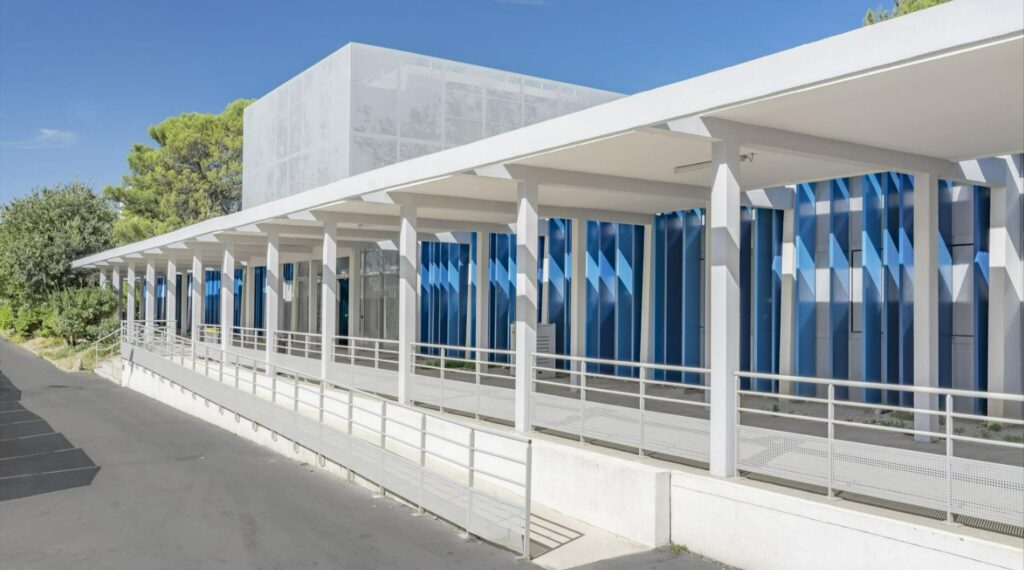
A structuring operation for physics research in Montpellier
The "LPM" project is being carried out in two phases to bring together the Charles Coulomb Laboratory and the Montpellier University/CNRS Universe and Particles Laboratory. Currently dispersed, they will finally be brought together in two nearby renovated buildings.
These buildings have also been completely restructured to house the latest generation of high-tech scientific equipment needed for fundamental and applied physics research.
The first phase involved the renovation and extension of building 20 to make it a purely research building. This single-storey building dates back to 1965, and previously housed teaching, research and campus activities. Its surface area is now 2100 m² (with a 450 m² extension).
The two laboratories, L2C and LUPM, employ over 200 permanent staff (including 135 researchers and Professors) and 100 non-permanent staff (PhD students, post-docs, etc.). The L2C is a fundamental and applied physics laboratory, focusing on a wide variety of themes: theoretical physics, physical chemistry, biophysics, with a core of theoretical and experimental research devoted to condensed matter and nanosciences. LUPM is a laboratory dedicated to stellar astrophysics, astroparticles, high-energy astrophysics, particle physics, cosmology and theoretical physics. It is involved in observational projects such as gamma-ray burst detection, neutrino signature detection, wide-field observation of the primordial Universe and stellar evolution, stellar magnetism and primordial signatures by nanosatellites.
The renovation of building 20 has two objectives
An energy renovation objective
It involves the installation of complete external insulation (walls and roof), replacement of windows and air conditioning systems (with dual-flow air handling units), as well as LED lighting.
A major restructuring project
The major challenge is to create high-performance research facilities with cutting-edge equipment (zone temperature/hygrometry control, air treatment, vibration insulation, etc.), while also adding value-enhancing spaces (auditorium, meeting rooms, etc.).
The vast majority of Building 20 is devoted to the L2C's optics, spectroscopy and near-field microscopy experiments: cutting-edge research into nanomaterials (carbon nanotubes, graphene), study of materials for quantum technologies, physics of quantum sensors and transmitters, photonics in the UV range, biophotonics, study of various materials (glass, semiconductors, etc.). Delicate, ultra-precise experiments, requiring all the conditions of thermal, hygrometric, vibratory and electrical stability (essential for original, productive and internationally recognized research). Facilities for the use of cryogenic fluids (nitrogen and liquid helium). A gas distribution system (Ar and He gases) is shared, as are chemistry rooms for sample preparation.
The second phase "LPM - building 13" is underway
It involves the renovation of a second building next door. Building 13 is much larger, with a surface area of 9,300m2 over six levels, one of which will be occupied by LUPM. The other levels will house L2C's offices and remaining experiments. This second phase of the LPM project is estimated at over €25 million. Work began in March 2023 and will be completed by spring break 2025.
Practical information:
- Date: September 25, 2024
- Location: building 20 on the Triolet campus

